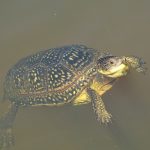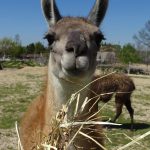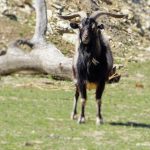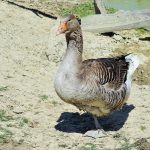What We Do
Our society has a diverse scale of activities.
Enlightenment, education and learning
Programs for kindergartens and elementary schools
Organized school groups visit the gardens every year during special day tours organized by our experts.
- Harta Trail ranks among the most popular programs
- More and more sought after are also highly specific programs: From the Life of a Tree, The Housekeeper Never Sleeps, Animals Known and Unknown, Water and What Happens in Biological Waste
If interested in our educational programs please contact us at via e-mail at info@scrb.org or via phone at +420605251439.
Accredited Educational Programs for Teachers and After-School Program Leaders
In 2019 we managed to obtain the accreditation of the Czech Republic’s National Institute of Pedagogy for the following programs.
Thanks to this accreditation the participation at these interesting seminars can be accepted as continued study for teachers.
These one-day programs are as follows:
- Conservation and Restoration of Biodiversity
- Sustainability of Water in Landscape
- Life of Trees
If interested in our educational programs please contact us at via e-mail at info@scrb.org or via phone at +420605251439.
Project activities
- We design and produce original educational blackboards
- Part of our portfolio are also project and consulting activities in the areas of dendrology and hydrology
- We design and build educational gardens in the school campuses
If interested in our educational programs please contact us at via e-mail at info@scrb.org or via phone at +420605251439.
Natural Garden Harta Trail
Our society operates in the area of the Harta Trail – the educational garden complex located at the suburbs of the town of Vysoké Mýto. We strive to contribute to the development and biodiversity increase of the trail. The following lines try to introduce the gardens to you. We would love to welcome you in person.
What is currently happening? Follow us on FB at https://www.facebook.com/harteckastezka.
What are the origins of Harta Trail?
When creating the basic character of the garden, a relatively strong watering of the surrounding heavy clay soils was used and water was recognized as a functional and aesthetic element.
Gradually, both the original and the collection plants are replenished, which form the framework of the entire garden. In the case of the animal diversity of the garden, the aim is to create habitat-equivalent conditions for life, which gradually uses both water elements, terrain modeling and the newly emerging plant layer. Over the years, a unique recirculation system of lakes and watercourses has been created in the garden, which gives life to the entire project. Part of the unit is a functional network of unpaved paths, which allow barrier-free access to almost the entire garden. The animals inhabit the entire space of the garden, both in the form of a natural occurrence given by the gradual modifications of the garden, and in human care.
Which animals inhabit the Harta Trail?
Of the wild animals, the return of many species of amphibians, reptiles and insects is significant, which mainly uses the possibility of development in old trunks and branches of trees placed gradually in the garden (it is mainly biological waste obtained during the care of mature trees when disposing of the redundant wood).
Many species of birds are beginning to use the garden space for drinking thanks to calm stagnant water, grainy-eating bird species obtain seeds from the fertility base of herbs due to an extensive approach to the care of perennials. Among animals kept in human care, turtles are an important group, whose species collection is one of the largest in Europe. Furthermore, the garden is divided into several spacious outdoor enclosed areas, which are inhabited by llamas, African ostriches, Australian emus, smaller breeds of horses, sheep, goats, mare steppe, Vietnamese pigs, meerkats, nosal reds, porcupines, coypu and more.
The garden includes several enclosed areas and an aviary for birds, where you can see different species of parrots and poultry. Children have access to a paddock with land turtles and guinea pigs. The ponds are home to a diverse collection of freshwater fish species.

















